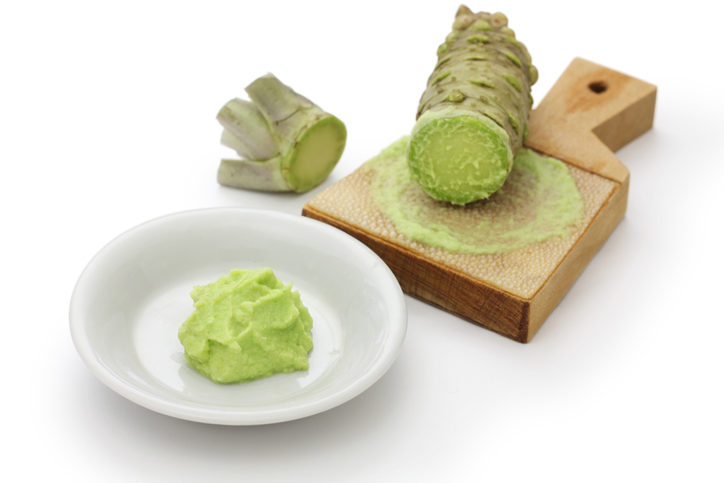If you are a foodie like me, odds are you have opened the door to a wide array of food types, flavors, and cuisines on your foodie journey. After a short time of tiptoeing through the food world, you discover your favorite specialty foods, and the bold flavors that come with those delights. Even better, you discover that the flavors you love have nutritional value. Who knew, great taste and nutritional benefits! Of course, we see this with the commonly used spices of today, including ginger, cayenne, turmeric, oregano, and garlic, but sometimes we have a surprising new addition.
I am a huge fan of many cuisines, but my favorite is traditional Japanese food. Wasabi, that beautiful, green spicy paste, not only elevates the flavor of this cuisine, but many people feel that you may not get the true taste desired without it. But did you know that it is also a health enhancer?
I will bet you remember the first time you experimented with wasabi. (You may have mistaken it for guacamole, like I foolishly did.) It was a short second or two until those strong wasabi vapors reached up and touched your nose, and it hit your tongue for the first time.
Wasabi japonica is a sturdy plant that prefers shady and humid climates, which allow the Japanese horseradish, or wasabi, to flourish. It is commonly found in New Zealand, Korea, China, and even in the United States, as well as the river valley areas in Japan. The first Japanese medical encyclopedia, called Honzowamyo, was published in A.D. 918 and it states that “wild ginger” (wasabi) had been grown in Japan for at least a thousand years.
It is a member of the Brassicaceae family, and with your first introduction, begins a permanent lifetime relationship with both your taste buds…and your nasal passages.
Sankikon is the wasabi rhizome, and Sanyuna is the name given to the leaves. The rhizome and leaves of wasabi are commonly used in Japanese medicine. In many countries, wasabi is used for appetite stimulation. It also is known for its antiseptic and antibacterial properties. The more you research wasabi, the more you learn about benefits it may provide. Much of the information has been handed down over the centuries. Benefits include digestive support, food preservative, inflammation support, antibacterial action, respiratory support, and wound healing, to name a few.
Wasabi is used as a spice in recipes. Allylisothiocyanate (AIT) is a potent component that occurs by grating the wasabi. It is well known that AIT shows inhibitory effects on the growth of food-poisoning bacteria and fungi. Several functional properties of roots and leaves from wasabi have been examined in vitro. Each sample exhibited antioxidative and superoxide scavenging potency.
Wasabi is used topically as well, commonly applied to a thin cloth and used on inflamed muscle and painful joint areas. It is traditionally applied for 10 to 15 minutes, so as not to cause any irritation because of its strength.
Longevity Rocks!










